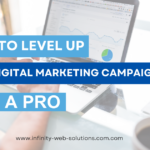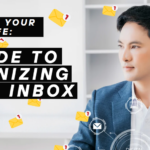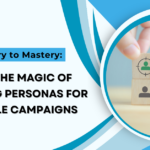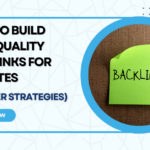Data changes quickly. People value privacy and are wary of giving corporations their information. Marketers will require reliable, privacy-compliant data-gathering solutions once third-party cookies expire in 2024. Answer? Zero-party data saves organizations and improves customer outreach.
Most firms use device graphs and third-party data to create client profiles. But inventive customer experience experts are using a different approach. They motivate customers to share their preferences, merging zero-party data into profiles. Using these profiles to create completely personalized experiences.
What is Zero-Party Data?
Zero-party data is customer information freely provided to a corporation. Examples include preference center data, future purchase data, personal context, and brand affinity data.
Zero-party data promises to help customers feel more comfortable with your business. It provides the insights you need to increase sales. Break through any barriers that may prevent a customer from making a purchase in the world of internet browsing privacy. Also, advertising continues to develop. Yet, zero-party data collection might be a steep learning curve for companies that have established their reputations on the backs of third-party data.
Brands will only find value in this information if they can connect it to a first-party client profile. In other words, it can only be gathered when a user has signed up for or logged into a digital property.
Customers voluntarily provide it, making this an entirely opt-in system. Businesses may use these details in segmentation, customization engines, and product recommendation platforms.
Benefits of Zero-Party Data
Zero-party data is growing for numerous reasons. This and similar regulations worldwide will restrict marketers’ internet access to customer data. It restricts data applications and may force enterprises to erase customer information upon request.
In the same way, Google plans to stop accepting third-party cookies in 2024. Apple limits data by preventing data aggregators. Social media companies collect information from Apple devices.
Controlling how much data people provide companies reduces the risk of misusing or selling their private data. Consumers must voluntarily consent to zero-party data gathering. Usually in exchange for a discount, loyalty points, or product recommendations.
This data facilitates a win-win brand-customer relationship. Increase client loyalty by improving the customer experience. Understanding the customer’s demands will help you satisfy their expectations.
Zero-Party Data vs. First-Party Data: Comparison
To fully grasp zero-party data’s significance, one must first appreciate what sets it unique. To do this, you must be familiar with the many forms of client information that may be gathered.
Zero-Party Data
- Information a client voluntarily provides to a business. Consumers’ interests, goals, surroundings, and desired brand awareness may provide this information.
- The reliability of zero-party data is its primary benefit. Because the consumer provides the information, verifying its legitimacy is unnecessary. Moreover, it’s being given out for free, so there’s no need to wonder about the legitimacy of the data’s origin.
- Nevertheless, zero-party data has one catch: You can only expect a return. Customers want value for their data. Business and customer expectations seldom match.
First-Party Data
- A corporation obtains directly collected data via its own means and resources. Among them are applications for smartphones, the internet, social media, text messages, electronic mail, and more.
- Since it is your information and was gathered by your organization, first-party data is invaluable. We may use this to our advantage in the market. It’s trustworthy since no third parties are involved, and you can verify where it originated from.
- One area for improvement with using first-party data is that it never seems enough. It requires significant time and energy to gather this data, particularly for newer consumers. Also, you’ll want a substantial quantity for analysis.
What To Know About Excellent Zero-Party Data Strategy
This kind of information requires a deliberate and calculated strategy for collection. Businesses should provide clients with an enjoyable, informative, and valuable individualized experience. Ensure they know the potential advantages of giving their data and how it will be utilized. Companies may gather information clients are willing to provide. It is via games, surveys, competitions, special deals, and loyalty programs.
Collecting this data helps brands and customers exchange. You learn more about them, they save time not browsing through hundreds of items. Everyone wins when you deliver a customized suggestion or discount. Also, when special offers are suited to their interests and preferences.
Customers will be more loyal if given a branded experience that is unique and consistent with their expectations.
Creating Consumer Profiles Using Zero-Party Data.
Customer profiles include name, email address, gender, location, and buying patterns. Zero-party data is used to create these profiles. It gives firms a deep understanding of each client and their brand interactions.
Customer profiles may include demographic information like age, gender, and location. Purchase history like what was bought and when; preferences like clothing size and color or preferred payment method. Interests like hobbies or activities; and contact information like email address, phone number, and postal address.
The “soft” aspects of your consumers’ passions, motivations, and interests. Preferences may also be gleaned through zero-party data. If you go to a third party for all these clarifications, you’ll end up with informed guesses or assumptions. Hence, the best method to get to know your consumers is to ask them directly rather than presume.
How to Collect Zero-Party Data
How to truly acquire zero-party data is another frequent question we get. Like traditional merchants, e-commerce brands have some options for engaging with consumers. It also includes soliciting answers to crucial concerns.
This section will discuss some of the most frequent claims companies make.
- Use your pop-up to solicit client information beyond their email address. It is a conversational pop-up or one tailored to a particular product line. To make your campaigns more relevant, ask for information such as the recipient’s birthday, preferred color, taste, or kind of cake.
- Create a survey or quiz for your site. Creating and administering examinations is fun for getting to know your consumers better. Create means through which you may consult with clients about their wants and pain spots. This includes product recommenders, surveys, habit finders, or consultations.
- Please share your email notification preferences. Consumers aren’t interested in receiving emails about sales or new products. Specifically those that don’t pertain to them. Build a hub for client email preferences where they may choose the kind of communications they want. Also, in the categories of products they have the most significant interest in.
- Create a landing page with a form and hold a contest. Embedded forms may collect more than email addresses from site visitors. As with the previous approaches, you may ask the buyer what they want. A contest landing page with the form as an entry option is a great way to improve form fill-outs.
- Enable consumers to establish an account. When consumers join up for a subscription, membership, or loyalty program, you might ask about their preferences. Ask for their birthday, favorite style, skin type, or whatever else you need to classify them into flows.
Final Thoughts
In the Shopify marketplace, merchants are always vying for the attention of the same clients. It’s easy to become acclimated to the inefficient data collection methods currently in place. But if you haven’t been paying attention, the ground is beginning to move out from beneath you.
Customers must be asked for information directly. If you position your brand before the changes occur, you may get an advantage over the competition. The use of zero-party data isn’t merely recommended for dealing with customers. Rapidly approaching, it will replace all other concepts. Furthermore, you’ll be interested in learning the specifics.










